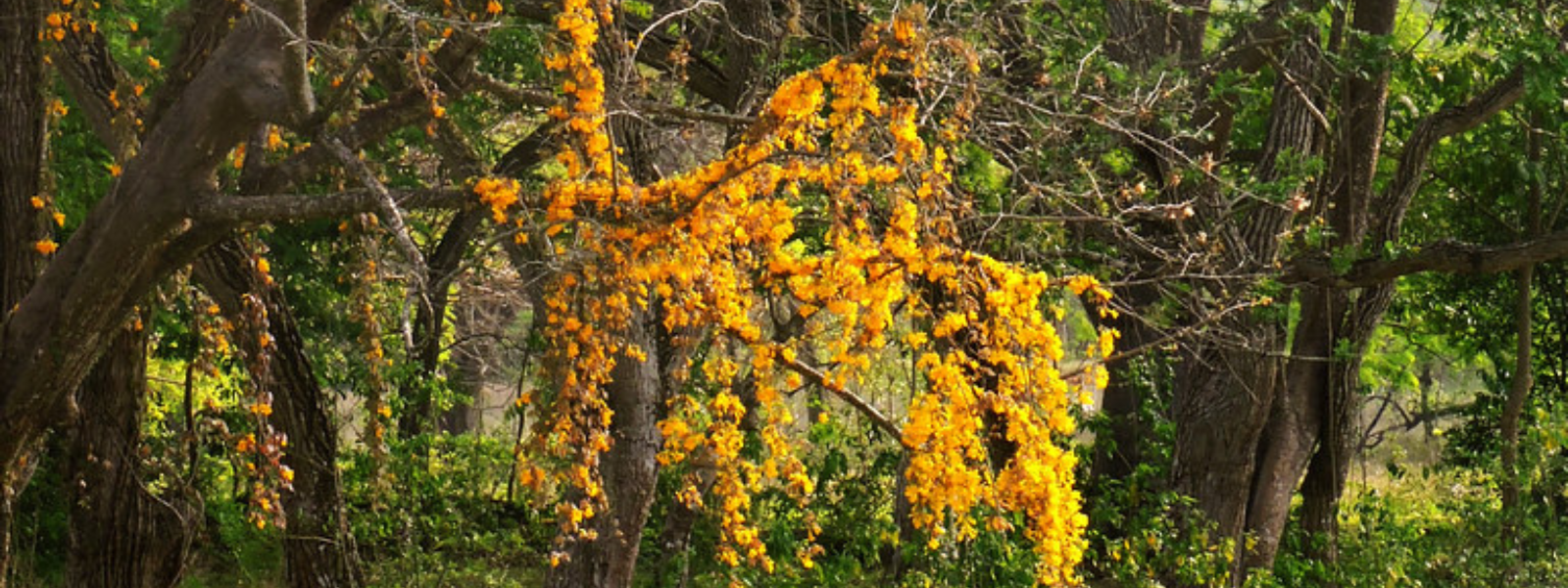
Common Name
Hairy cat's claw creeper, Cat's Claw Vine, Yellow Trumpet Vine, Cat's Claw Creeper, Funnel Creeper
Scientific Name
Dolichandra unguis-cati
Family
Bignoniaceae
Lifecycle
Perennial
Seasons of Growth
Year-round
Key Distinguishing Feature
Vine with claw-shaped tendrils and yellow-orange flowers
• Growth Form: Hairy Cat's Claw Creeper is a climbing vine that can reach considerable heights. It attaches itself to support structures or other vegetation using tendrils equipped with claw-like hooks.
• Leaves: The leaves are pinnately compound, meaning they have multiple leaflets arranged along a central stem. They are typically dark green and serrated along the edges.
• Flowers: The flowers are trumpet-shaped and usually bright yellow to orange in colour. They are borne in clusters and are quite showy.
• Fruit: The fruit is a long, slender capsule that contains winged seeds.
• Habitat: Hairy Cat's Claw Creeper is commonly found in a variety of habitats, including disturbed areas, roadsides, and as an ornamental vine in gardens. It is native to South America but has naturalized in other regions.
Ecological Impact:
• Hairy Cat's Claw Creeper can be invasive in some regions, where it can smother native vegetation and alter ecosystems. Its rapid growth and ability to climb make it a competitive species.
Control Methods:
• Control of Hairy Cat's Claw Creeper often involves a combination of mechanical, chemical, and cultural methods.
• Mechanical methods include manual removal, cutting, or pruning to reduce its biomass and prevent it from climbing.
• Herbicides may be used for control, but care must be taken to use them safely and effectively, following local regulations.
• Preventing the establishment of Hairy Cat's Claw Creeper through vigilant monitoring and early removal is important to prevent its spread.
Hairy Cat's Claw Creeper is a challenging invasive vine that requires active management to prevent its spread and protect native ecosystems. Local agricultural authorities often provide guidance on the best control practices for this invasive species.




